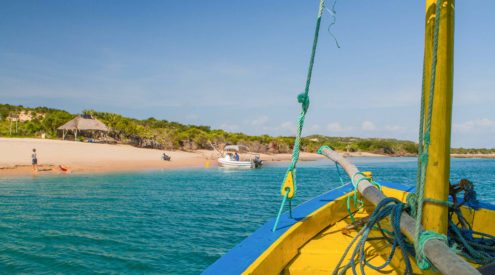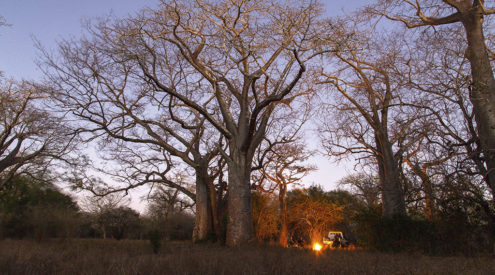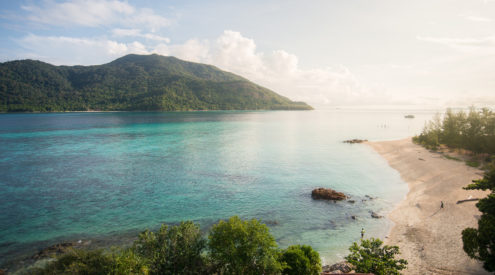Our neighbour is on the road to restoring its wildlife heritage. We went on a recce to Sábiè Game Park, Maputo, which is setting the pace for wildlife conservation. It has an abundance of game and is still off the regular tourist route, so you’ll get a true wilderness experience with no cars in sight.
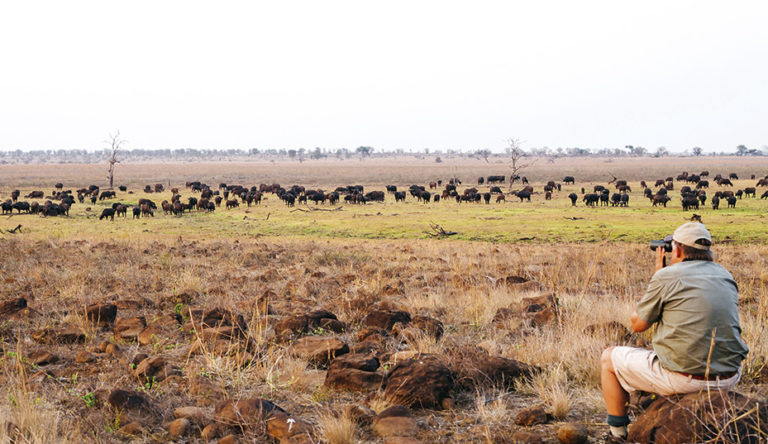
Buffalo numbers are huge at Sábiè
Game Park. Here at Corumana floodplain, Peter Ruddle gets close up with binoculars.
Let’s face it, Mozambique is not renowned as a wildlife destination. For many South African travellers, the country is the nearest ‘international’ holiday for lazy days at the beach sucking on fat juicy prawns and sipping ‘Dosh Ms’. But, I was on safari in the extreme southwest of the country at Sábiè Game Park, gnawing on buffalo shin prepared expertly by head chef Tapiwa ‘Taps’ Mahachi.
That day, it had been a crack-of-dawn start in Cape Town to catch my 6.30am flight via Joburg to Nelspruit airport. By 11am, I was on the road with Sábiè’s marketing director, Peter Ruddle, who would be my guide and drive us into Mozambique. Mpumalanga sure is a magnificent farming country. The landscape was filled with sugarcane fields, orange groves and banana plantations, and I could see the distant Lebombo mountains as we moved towards the border at Komatipoort.
Also read: Desert countries to visit: 5 things to do in Morocco
Once we were in Mozambique, the scenery flattened out and we passed through the town of Moamba and a small settlement of Sabie (pronounced ‘Serbia’ by locals). By late afternoon we were sitting on a rocky outcrop looking across Piva Dam at Sábiè Game Park. Peter was fiddling with the telemetry radio-tracking antenna, then raised it in the air slowly moving it in a circle above his head. All we could hear was scratchy white noise. He sat down and took a gulp of beer. ‘I think the lions have moved off. They were around here yesterday,’ he said.
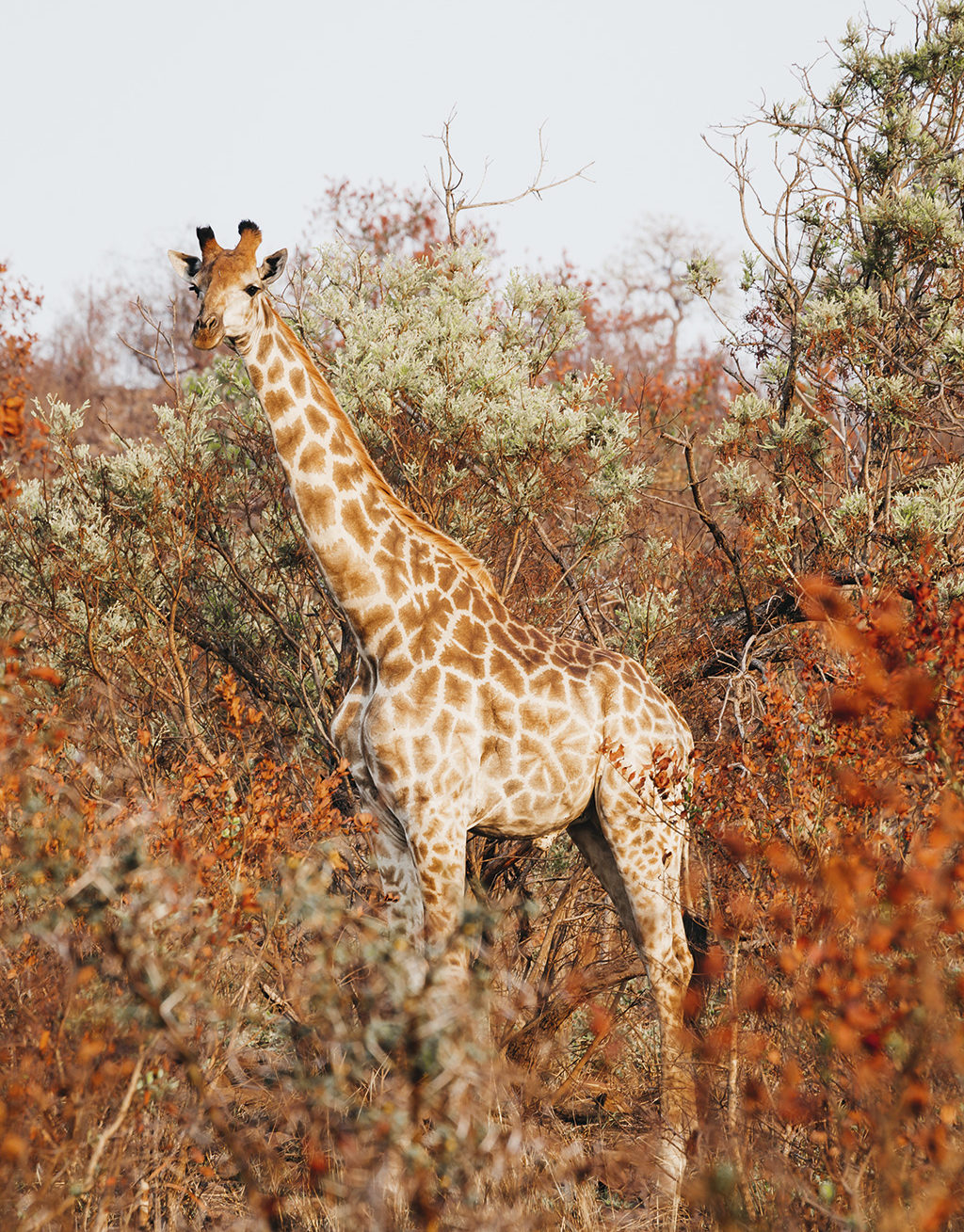
Winter colours in the park frame the tallest animal in the world.
Peter has worked in the bush for most of his life and has honed his spotting skills; over the next three days, he noticed the tiniest movement in the undergrowth and never failed to get excited by the appearance of wildlife, however small. Early one morning we came across a sounder of warthogs crossing the road. Their tails perked upright, they stopped to look at us for a moment and then trotted off into the veld. But we were off to find bigger stuff – those elusive lions. More than 35 have been counted in the reserve, with one pride sticking to the north and another to the south.
Since early 2000, Mozambique has been slowly reclaiming its wildlife heritage. Game populations were utterly decimated during the country’s 16-year civil war. Sábiè is playing its role in the preservation and conservation of almost 30 000ha of bush adjoining the Lower Sabie section of Kruger National Park, which is all within the Greater Lebombo Conservancy (GLC), an area of 2 483 square kilometres. The GLC is regarded as the most critical area on Earth for rhino conservation – almost half of the world’s remaining rhinos roam here. Sábiè’s anti-poaching efforts and work to include locals in building wildlife tourism have earned them a conservation award in Mozambique.
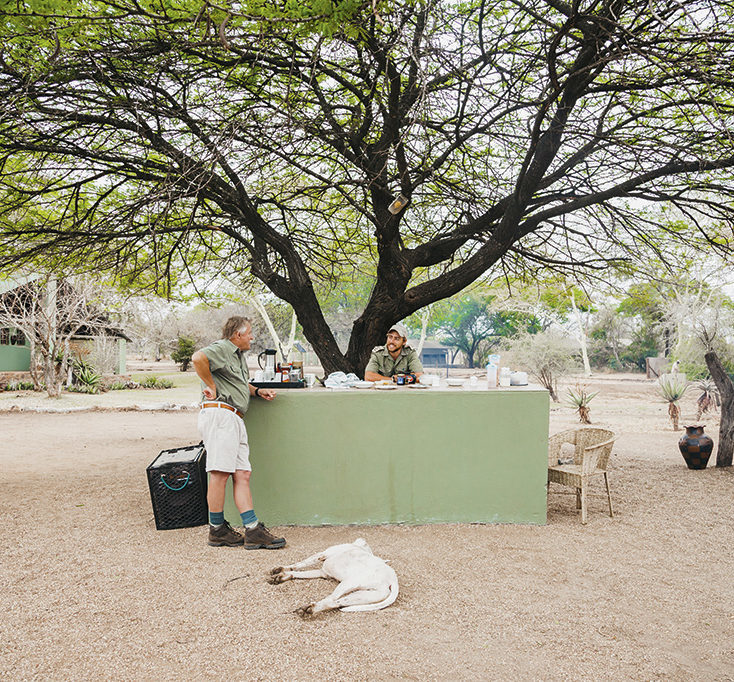
Peter Ruddle (front), in the boma with reserve manager Tom Barnes. Here you can help yourself to breakfast, hot beverages and sundowners. It’s also Duke’s favourite place to snooze.
Those elusive lions aside, the park has elephants, giraffes, leopards, wild dogs, and black and white rhinos along with various antelope and plains game. Birdlife is also rich – a rare Taita falcon’s nest in the Masintonto gorge has been sighted. ‘Sábiè began in early 2000 with a handful of “dagga boys” (buffalo) and a small herd of impala,‘ Peter explained. ‘Through a conservation programme over many years, we built up the game numbers and initially opened the area up to selective hunting to help subsidise establishment costs. The game numbers have increased substantially to a point where we can now offer a magnificent wilderness game-viewing experience,’ said Peter.
‘Honey badger,’ he announced. Turning my head, I saw the end of a black and white body disappearing into the undergrowth. Things move fast in the bush. I really had to up my game. ‘Those guys are some of the most fearless creatures in the bush and have a really tough skin,’ he explained. ‘They can take on lions.’ Where were those lions? We were driving down into a riverine habitat full of dongas, and just as I was thinking this was a losing cat-and-mouse game, the tracker pinged and Peter quipped ‘Bust!’ I couldn’t see them. ‘There,’ he pointed into the thick yellow bush. All I saw was a thick yellow bush. But gradually, my eyes adjusted and I made out slight movements – a shiny eye, a flick of the tail. The pride was well camouflaged. With no way of getting an ace photo (they didn’t look like they wanted to move), we sat for a while listening to the sounds of the bush. What is it about the single annoying fly that is heard above anything else?
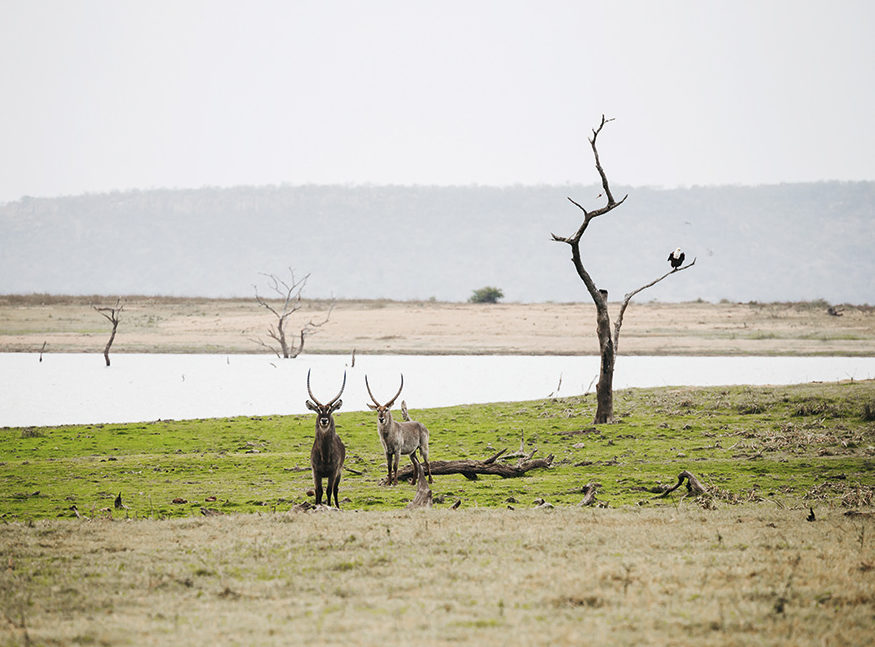
Curious waterbuck on the Corumana shoreline.
Later that day, we came across a herd of buffalo mooching about on the plains near Corumana Dam on the park’s southern border. What a scene to behold, at least 800 of them. I love these herbivores – their horns look like they’ve been styled in a 1950s hair salon, and they always seem bored to death with people staring at them. One of the prominent features at Sábiè is the black cotton soil, and yes, it’s good for growing cotton, but not for vehicles in the rainy season when it turns into sludge. I also observed that the relatively recent history of this area still makes itself ‘heard’ with cotton stalks dotting the land, which was ploughed for production during Portuguese rule. Peter drove us up to the remains of the farmhouse, which sits on a hill overlooking a plain and is used for overnighting on 4×4 safaris. Two bougainvillaea trees have survived the harsh environment – the red flowers against the dry parched earth were startling. I wondered about the people who had tended these plants at that time.
More history pops up, quite literally, at Corumana Dam. The remains of two Portuguese trading posts protrude from the water, one of which was a bakery, which once served travellers along this ox-wagon trade route. When the 71-square-kilometre dam is expanded to supply more water to Maputo’s ever-increasing population, this part of history will be completely submerged. According to Peter, Sir Percy FitzPatrick’s adventures (Jock of the Bushveld) to Lourenço Marques (now known as Maputo) would have taken him on this route.
On my final afternoon, we sat eating Taps’ gigantic sandwiches, packed with fresh ingredients, for lunch under a sycamore fig (its fruit is loved by birds and monkeys). We were in the north of the park on the edge of the Masintonto River, where herds of ellies come to drink. We got up to walk further into the gorge, surprising two Sharpe’s grysbok (royal game in Mozambique, and extremely rare). They raced up the rocks and disappeared before I could take their picture. ‘Michelle, you’ve really got to up your game,’ laughed Peter.
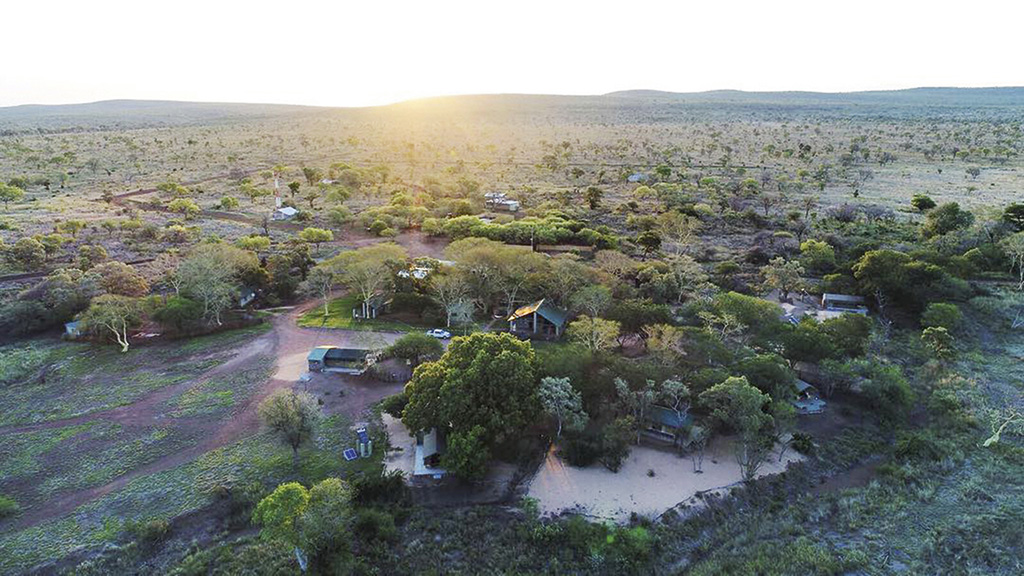
Sábiè Game Park’s camp is sheltered from the heat under nyala berry trees.
Click here to read part two
Words by Keri Harvey and Michelle Hardie; Photographs: Michelle Hardie
Follow us on social media for more travel news, inspiration, and guides. You can also tag us to be featured.
TikTok | Instagram | Facebook | Twitter
ALSO READ: Rewilding Mozambique: Zinave National Park









